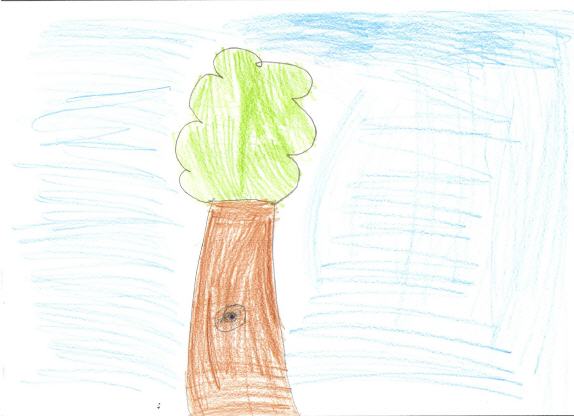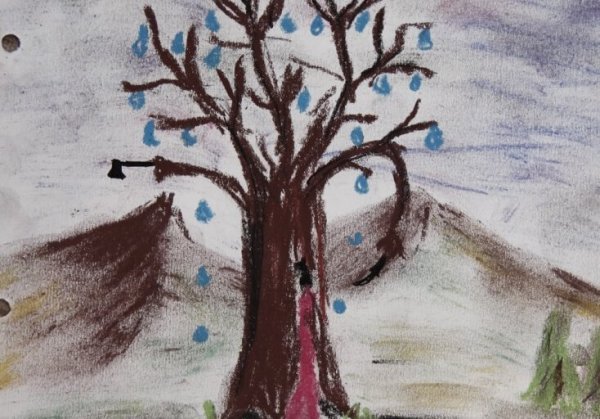Karl Koch's Tree Test


Written and verified by the psychologist Valeria Sabater
Karl Koch’s Tree Test is an interesting projective test of our personality as well as our underlying emotional universe. Because it is easy to use, it is common to do it with children. However, it is also a very entertaining self-analysis tool to try to get to know ourselves a little better.
The Tree Test is also known as the Baum Test and was developed in the 1950s by a psychologist named Karl (Charles) Koch. It is already quite a few years old, but is still frequently used. If we say that this test only consists of asking a child or an adult to draw a tree with its roots, its trunk and its branches, it is possible that you may doubt almost instantly the reliability and validity of this instrument.
The advantages of the Tree Test are that it can be administered quickly to a wide variety of people. It offers interesting information about emotions that will later be compared with the results of other tests.
Before reaching this conclusion, we should take one detail into account. Projective tests are a very useful clinical instrument. Thanks to them, we can collect various data on how our patients perceive, understand and manage their world. So, instruments such as the Rorschach test, Draw-a-Person test, or the Tree Test are very effective as complementary (non-exclusive) tests that we can use together with many others.
On the other hand, and as a simple curiosity, Dr. Koch chose this figure for his diagnostic test because of the symbolism trees have. In all cultures, all countries, trees are a mythological and emblematic figure that are entwined with human beings. Trying to capture them, trying to draw them is almost like taking out everything that we carry inside…

What does the Koch Tree Test evaluate?
The Koch Tree Test requires us to make a drawing, to choose colors, to create a figure from nothing by capturing it on a blank page. It offers some clues about our personality style. Along the same lines, it shows certain emotional states.
- It also measures the stability of the person, the presence or absence of internal conflicts, their vulnerability and sensitivity.
- On the other hand, certain psychological disciplines, such as psychoanalysis, indicate that this test also reveals the structure of the psyche or content of our unconscious.
- It is interesting to know, as a recent study reveals, that the Baum Test has been very effective in diagnosing cognitive disabilities and even the beginnings of dementia.
How do we apply it?
The Tree Test is relevant for anyone from 5 or 6 years old. It only requires that the person has certain basic motor skills needed to draw.
- The person receives a blank sheet of paper, colored pencils and an eraser.
- They draw a tree, with its roots, its trunk, branches, etc.
- In the case that the patients 5 or 6 year old children, we will ask them to make two drawings. The first will be freestyle, “draw any tree, one you like“, they are told. Later, they are told to make a new drawing, and now the tree is different from the first. So we will have two drawings to be able to make the evaluation clearer.
- The estimated time ranges between 10 minutes and half an hour, depending on each person’s needs.

How do we analyze the Tree Test?
We should look at these elements:
Ground
- A drawing where there is no line of soil or roots may indicate a lack of emotional and personal stability in the patient.
- Disproportionate and lightning-shaped roots can also indicate problems, emotional containment, rage and uprooting.
Trunk
- A very thin trunk: very sensitive and delicate. Or, it can mean the presence of external tensions or demands that alter the calm and well-being of the patient.
- A very wide trunk: impulsive, with high emotionality and little capacity for self-control.
- A trunk with normal proportions means internal balance.
- Trunk formed by straight lines: a righteous person, with good capacity for abstraction.
- Trunk with wavy lines: sociable, sweet and has no problems with sociability.
- Trunks with dilatations, hollows, studs, protruding tips: presence of fears, traumas, contained emotions, inhibition …
Branches
The tree branches reflect interaction with the physical and external environment. While the roots and the trunk are more related to the inner and emotional world, the branches supposedly represent another psychological level.
- Small branches: children up to 9 years old always draw small branches, it is normal. This can mean immaturity, or the relationship to the world of the child.
- Big branches: the person making the drawing has a great imagination, enthusiasm or even a little more narcissism than usual.
- Tree without branches: you can tell us that the person who has made the drawing has a lack of development or a possible cognitive problem.
- Spiraled branches: communicative, with good taste, delicate.
- Lightning or rod shaped branches: stubborn person, impulsive, with some anger or defiant feelings.
- Branches with leaves: vivacious.
- Branches with fruits: person with goals and wishes to fulfill.

There are many more values than those we describe here, such as other “accessories” like houses, birds, hills… That is, details the psychologist didn’t ask for that can also provide relevant information. Also, it is good to take into account the colors chosen for the tree and even the size of the figures themselves.
In addition, things such as cut branches, holes or wounds in the trunks, lack of roots or the presence of dark colors can call attention. All this could possibly mean there is trauma. However, the Tree Test is not the only diagnostic test available. It is just an interesting tool, which together with other tools can help us gather information to give a more precise final diagnosis.
This text is provided for informational purposes only and does not replace consultation with a professional. If in doubt, consult your specialist.








